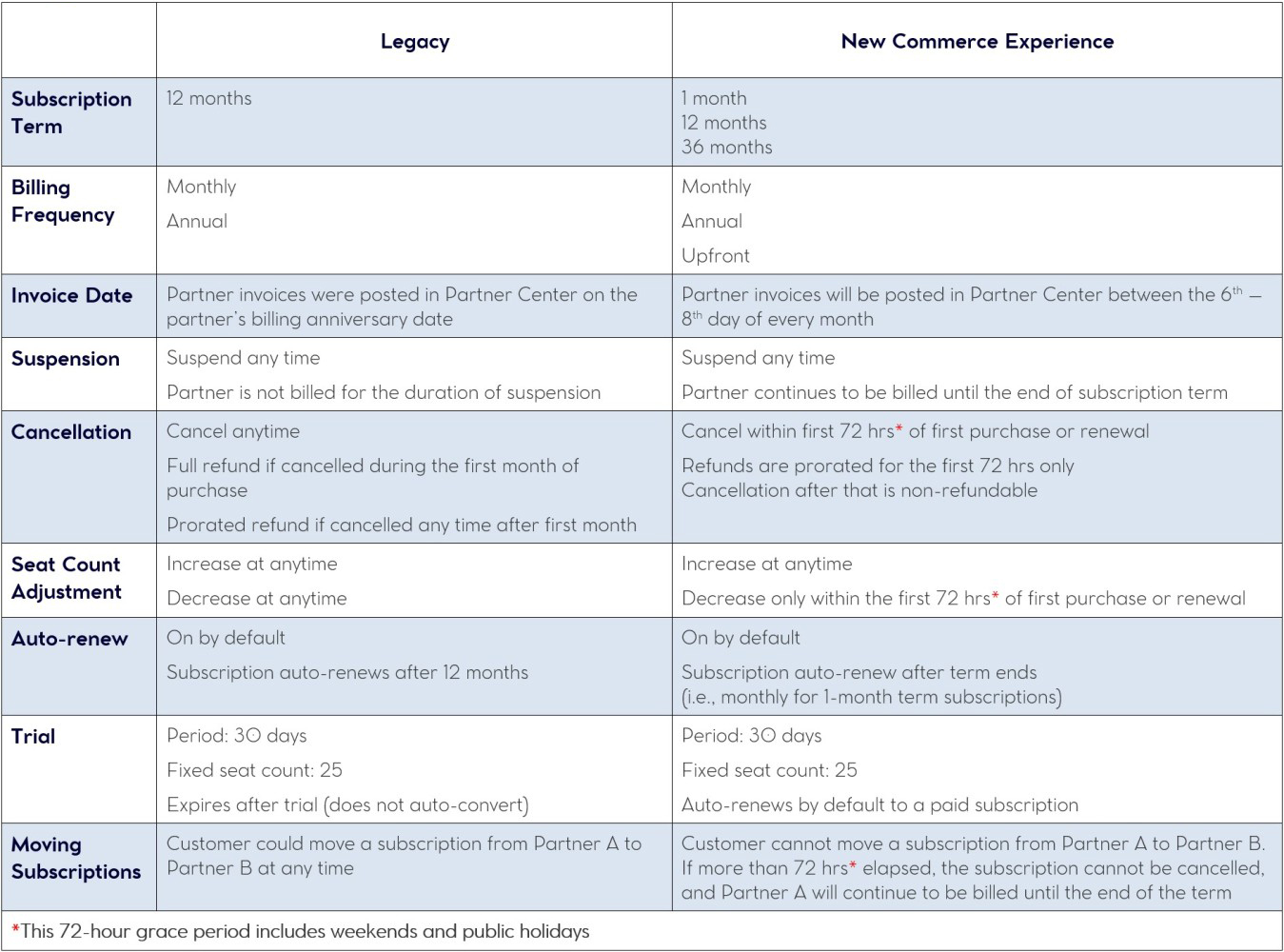Still confused about Microsoft new commerce experience? Read this.
In January 2019, Microsoft launched its new commerce experience (NCE) for Microsoft Azure and in October 2021, it brought seat-based cloud offers to the new commerce experience for a unified purchasing experience. One of Microsoft’s primary goals was to reduce the complexity by standardising the subscription lifecycle from purchase and renewal to billing, while introducing more purchasing options. New commerce experience is more about how partners purchase and manage CSP subscriptions than what they are purchasing.
As a company keen on helping MSPs maximise their revenue from recurring services, we wanted to understand what Microsoft intends on achieving with these changes. In this article we will discuss what we believe to be the big picture and cover important dates and major changes that you need to be aware of before your next billing cycle. In our upcoming article we will share tips on how to make the most of these changes to boost your profit. So, stay tuned.
What is really happening with NCE?
To understand what has really changed, a brief discussion of how things worked before (aka legacy CSP) is necessary. The key difference between legacy and NCE is the subscription term and management policies applicable to each term. A subscription term is the period between the subscription purchase date and its renewal date. This is independent of the billing frequency, which in the case of legacy CSP was monthly or annual. Microsoft has always maintained the price of a subscription throughout its term and will continue to do so with NCE, even when the price of the product goes up for new purchases.
Note the distinction between a product (aka SKU) and a subscription. A subscription in CSP is a "container" in which the customer purchases a number of seats for its users, at the unit price of the SKU on the CSP pricing list for a given term. This way, the list price of any SKU can go up for new purchases while active subscriptions maintain their price for the duration of their term.
Changes in subscription commitment term
Legacy
Under legacy CSP, there has always been one commitment term: annual. Customers were allowed to pay monthly or annually, but the subscription renewed yearly, and its price remained unchanged for the duration of the term, i.e., the whole year.
NCE
NCE introduced three different commitment terms: monthly, annual, and triennial. Now, the same rule of maintaining a subscription’s price applies, but now it can change as frequently as every month for monthly commitment term subscriptions.
Changes in pricing
There has been a lot of back and forth on how and when the prices are changing and for which SKUs and commitment term offers. The short version is that Microsoft intends on matching the pricing of NCE annual and triennial commitment terms with that of legacy CSP and offering NCE monthly commitment term at an increase of up to 20%.
Is annual commitment term Microsoft’s favourite?
It is not mere speculation to say that Microsoft is trying to encourage partners and customers to go for annual/triennial commitment term offers. In fact, it has introduced a promotion of 5% discount off February 2022 pricing of annual term offers.
How’s anything really different?
As an MSP, you may think that nothing has really changed for your business if your customers’ existing legacy subscriptions will be converted to NCE and, for the foreseeable future, it will stay at the same price. The truth is a lot has changed in how annual commitment term subscriptions can be managed under NCE, which will affect your contracts, pricing, billing, and overall revenue.
In the past, although the commitment term has always been annual, a lot of the terms and conditions were not strictly enforced. As an example, a customer could cancel a subscription at any time during its term and receive a prorated refund. Also, they did not have to pay for a subscription while it was suspended. With NCE, Microsoft will be tightening measures that regulate annual subscription management, which should also reduce the complexity of billing.
The table below shows a direct comparison of the main areas that will be affected by this change.


